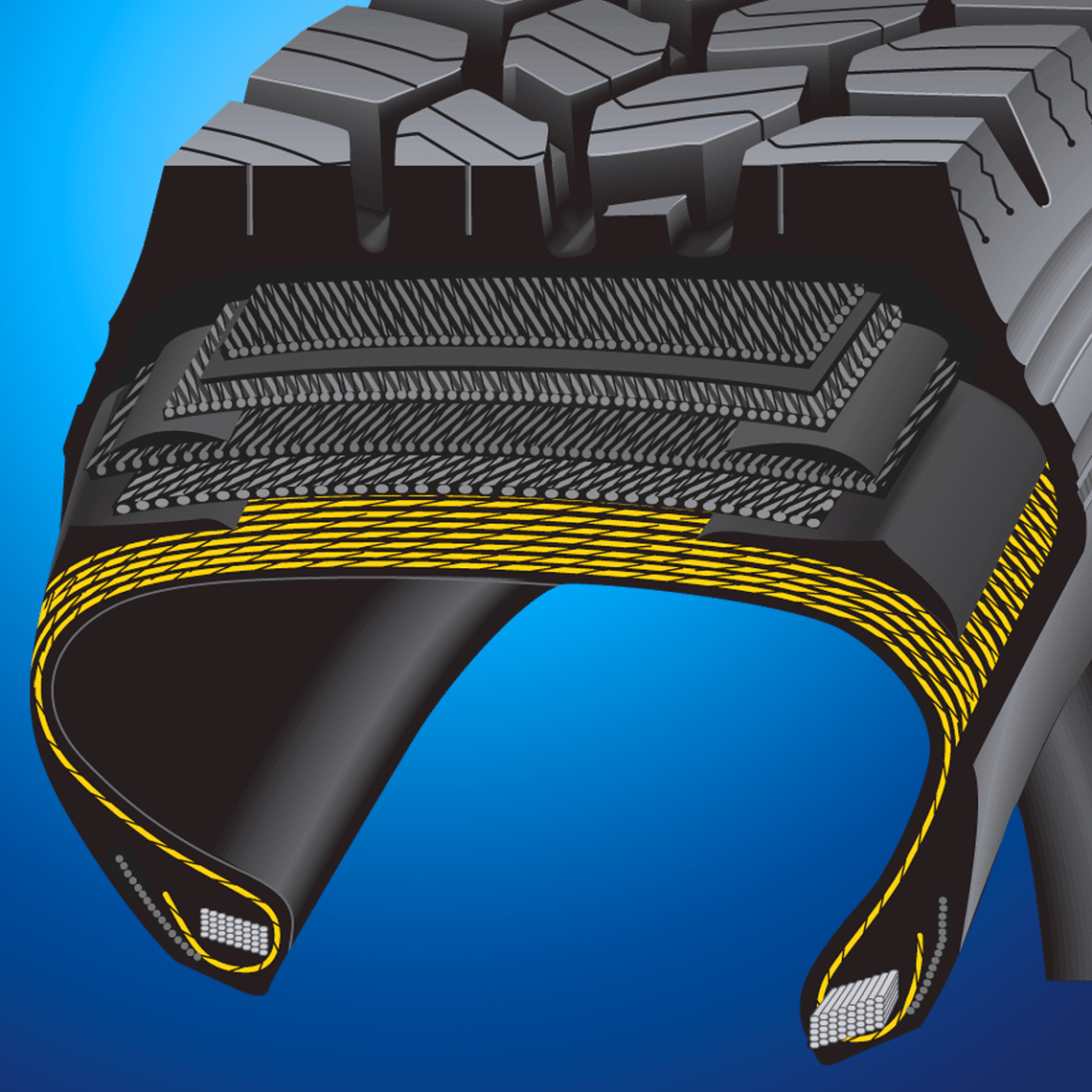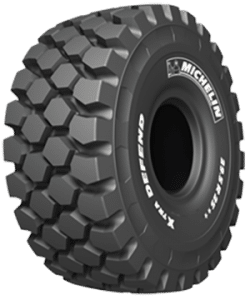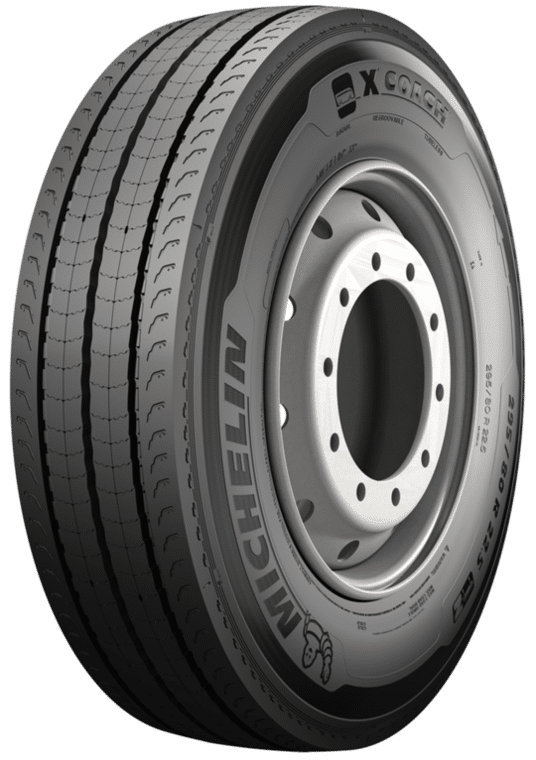
MICHELIN Radial technology
The radial tyre: The Michelin innovation that revolutionized tyre construction
WHAT ARE RADIAL TYRES?
RADIAL TYRE MEANING
There are several different types of tyre construction. Radial tyre construction is one of them. In 1946, Michelin patented the steel-belted radial tyre construction, revolutionizing the industry with a steel belt and carcass threads arranged at right angles to the direction of travel.
CONSTRUCTION OF RADIAL TYRES
In a radial structure, one layer of cables radiates around the axis of the tyre. In addition, the crown consists of a second layer of plies forming a belt placed circumferentially around the tyre.

MICHELIN RADIAL tyre
DISCOVER THE ADVANTAGES OF RADIAL PLY TYRES
GRIP
The sidewalls and crown of a radial tyre have specific characteristics. The crown grips the road thanks to a harder tread and to more flexible sidewalls. It is, therefore, designed to wear more evenly.
RIDE COMFORT
A radial tyre offers driving comfort at high speeds by cushioning irregularities in the road, with sidewalls designed to have a higher load-bearing capacity.
RETREADABILITY
A radial tyre structure is designed for more uniform wear and to provide a stronger casing, helping the tyre last longer through multiple lives. Learn more about retreading.
RESISTANCE TO DAMAGE
The radial tyre introduced a stronger casing that resists damage, punctures and heat, especially compared to bias tyres.
POPULAR MICHELIN RADIAL TYRES
FREQUENTLY ASKED QUESTIONS - RADIAL TYRE
This depends on how you define a "normal tyre." As opposed to a bias-ply tyre, the construction of which features a crisscross pattern of cords running at angles, the radial tyre's internal ply cords are arranged at 90 degrees to the direction of travel. Michelin patented this innovation in 1946, revolutionizing the tyre industry.
Due to these differing constructions, a radial tyre had different performance benefits as compared to bias-ply tyres. Radial tyres typically offer better traction, fuel efficiency, and wear resistance due to their flexible sidewalls and efficient heat dissipation. They also provide a smoother ride and enhanced stability, making them ideal for long-distance hauling. Bias-ply tyres provide advantages in certain off-road conditions.
For more information, please contact our MICHELIN experts.
In usage, a radial tyre will have a bulging at the bottom of the sidewall, given its flexibility. In agricultural applications, you would also notice it compacting soil less, given its larger contact patch. Otherwise, Michelin radial tyres can be identified by the X® in the tyre name or by an R in the size: 11R22.5. A bias-ply tyre would have a hyphen in the size: 11L-15.
A radial tubeless tyre is characterized by its radial construction, as detailed on this page. As a tubeless tyre, it does not require an inner tube, instead utilizing an airtight seal that maintains air pressure within the tyre itself.
Radial tubeless tyres are commonly used across various vehicles, including passenger cars, trucks, agricultural equipment, and more, offering superior performance compared to tube tyre constructions.
Want to know more about the different MICHELIN technologies?






